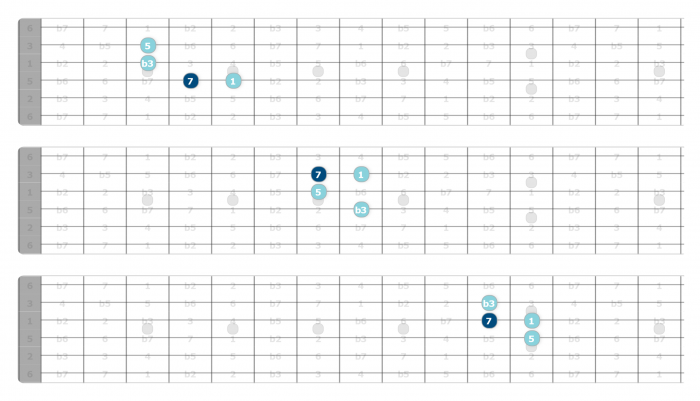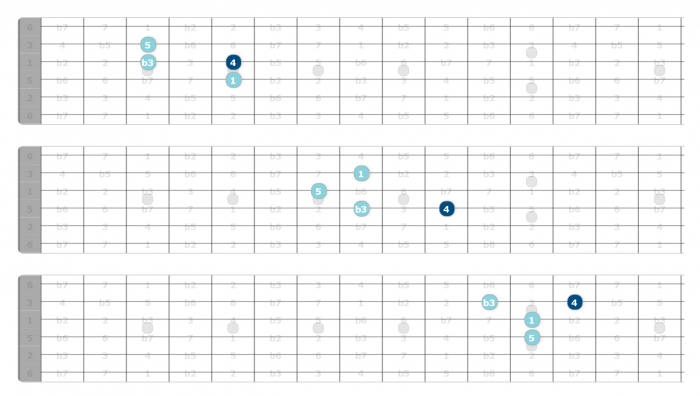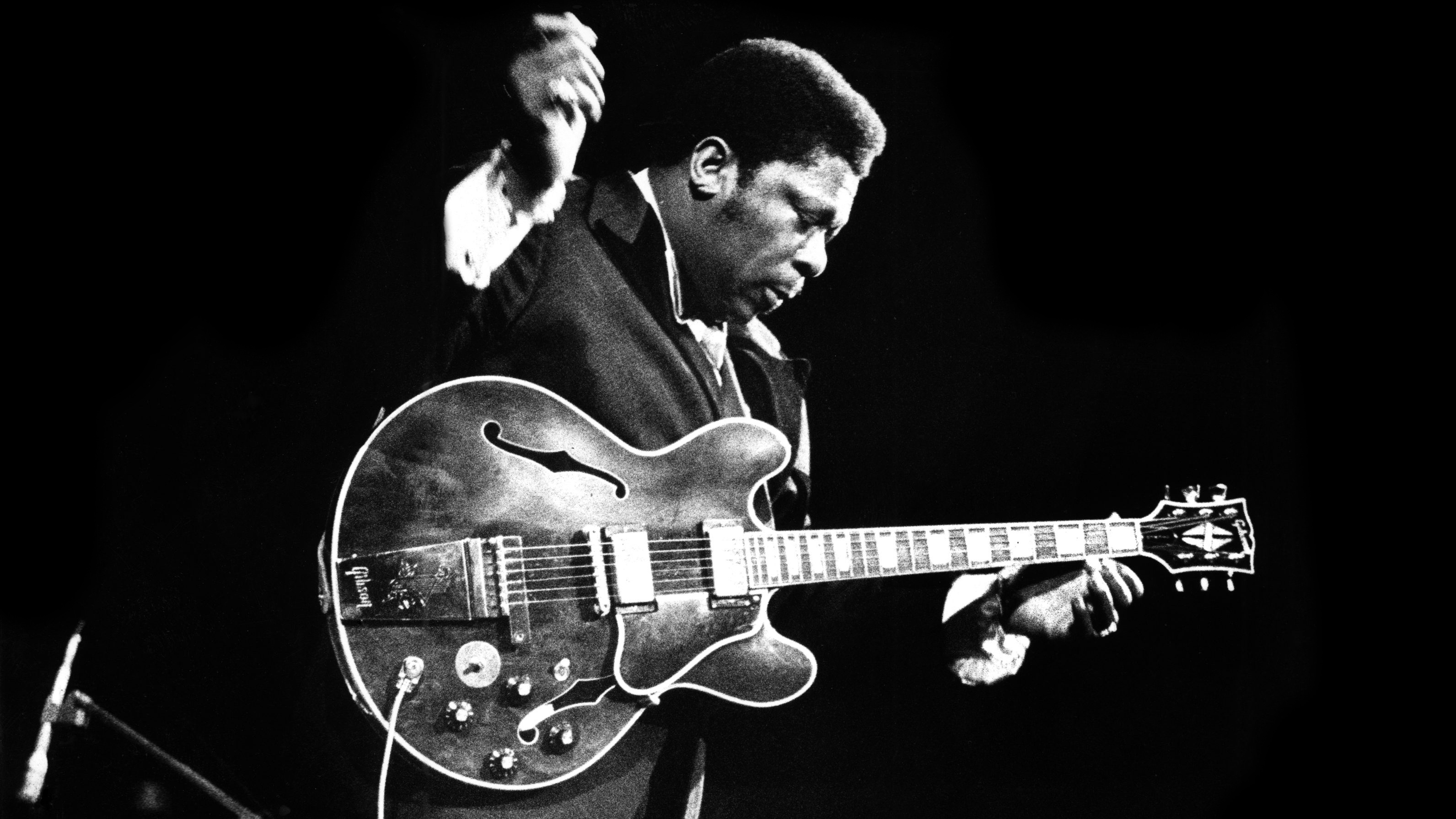In Part 1, I mentioned that 4-note clusters are actually better for learning triad soloing than triads themselves. This is because 4-note clusters are the backbone/chord tones/arpeggio notes etc. of most of the scales, modes and arpeggios that you regularly use.
For example, the 4-note cluster we looked at in Part 1 (1, b3, 5, b7) gives you the basis for several useful formulas:
Minor 7 Arpeggio: 1, b3, 5, b7
Minor Pentatonic: 1, b3, 4, 5, b7
Dorian: 1, 2, b3, 4, 5, 6, b7
Phrygian: 1, b2, b3, 4, 5, b6, b7
Aeolian: 1, 2, b3, 4, 5, b6, b7
More Options
What if we have our 4-note cluster with a natural 7 instead of a b7?

This cluster gives us the backbone to:
Minor (maj7) Arpeggio: 1, b3, 5, 7
Melodic Minor: 1, 2, b3, 4, 5, 6, 7
Harmonic Minor: 1, 2, b3, 4, 5, b6, 7
By backbone I mean the most important intervals in all the above scales and arpeggios. These are the defining intervals that you’ll want to land on/resolve to when you improvise. Don’t worry about the others just yet, your task here is to know exactly what interval you’re playing at all times using the triad + b7 or + 7 diagrams.
What will happen in my brain?
Once you know exactly what interval you’re playing, they become second nature and you can concentrate on adding in/combining them with other intervals to produce the desired sound. The 1, 3, 5, and 7 in their various guises are the foundation, all other intervals can then be used to express your chosen formula.
For some reason, adding that fourth interval in is a game-changer but those four intervals MUST be second nature before you attempt to add in any others. I don’t know why it works, but I could never do this with 3-note triads and 12 shapes, it was just way too much thinking.
The Magic 4
The 4, when it’s not a #4, is like the oil in the machine of a formula. It’s not an interval you’ll want to resolve to or spend too much time hanging on, but it is a great passing interval that provides fluidity to your lines and phrases.
Work it in using the diagrams below. Feel free to throw in the b7 or 7 as well, though you will naturally start to do this anyway.

Task: I’m laboring this but for now just make sure you know what intervals you’re playing at all times like a reflex action (don’t worry about the scale formulas). You want to know these intervals so well that you just forget about them. Work in the 4 and see how it gives you that edge to build more fluid phrases.
In Part 3, we’ll get in to the major and dominant side of all things triad soloing.




I’ve been learning a ton from your Triad Soloing and the “How to Solo Over Chord Changes” series. Very informative!
Thanks Dirk, great to hear it!